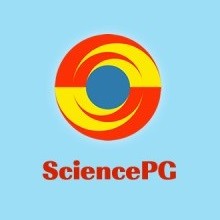
ارتباط بین هزینه یابی بر مبنای هدف و مهندسی ارزش و سود و کایزن مورد انتظار
چکیده
هزینهیابی بر مبنای هدف یک تکنیک قیمتگذاری است که شرکتها از آن استفاده میکنند. تعریف آن بدین ترتیب است: "یک ابزار مدیریت هزینه برای کاهش هزینه کلی یک محصول در کل مدت عمر آن به کمک تولید، مهندسی، پژوهش و طراحی میباشد". یک هزینۀ هدف عبارتست از ماکزیمم مقدار هزینهای که میتوان برای یک محصول متحمل می شود و با این وجود، شرکت مربوطه با یک قیمت فروش خاص هنوز میتواند حاشیه سود مورد انتظار را از آن محصول به دست آورد. در مقاله حاضر، از تجارب هزاران معلم در بازه بین 2011 تا 2012 جهت مطالعه ارتباط بین هزینهیابی بر مبنای هدف و مهندسی ارزش و سود و کایزن مورد انتظار استفاده شده است. روش هزینهیابی بر مبنای هدف به عنوان جدیدترین و دقیقترین تکنیک، میتواند در میزان سوددهی شرکت بسیار موثر باشد و به نظر میرسد که اجرای آن هم قابل کنترل باشد.
Abstract
Target costing is a pricing method used by firms. It is defined as "a cost management tool for reducing the overall cost of a product over its entire life-cycle with the help of production, engineering, research and design". A target cost is the maximum amount of cost that can be incurred on a product and with it the firm can still earn the required profit margin from that product at a particular selling price. In this article, financial expertise of thousands of teachers the period 2011-2012 was used to study the linkages between Target costing and Value Engineering and Expected profit and Kaizen. As the newest and most accurate method of target costing strategy can be very effective on corporate profitability and the factors discussed in the implementation of this method was considered to be controlled.
چکیده
1) مقدمه
2) فرضیات پژوهش
3) توصیف دادهها
4) جمع بندی
Abstract
1. Introduction
2. Research Hypotheses
3. Data Description
4. Conclusion
- ترجمه فارسی مقاله با فرمت ورد (word) با قابلیت ویرایش، بدون آرم سایت ای ترجمه
- ترجمه فارسی مقاله با فرمت pdf، بدون آرم سایت ای ترجمه
